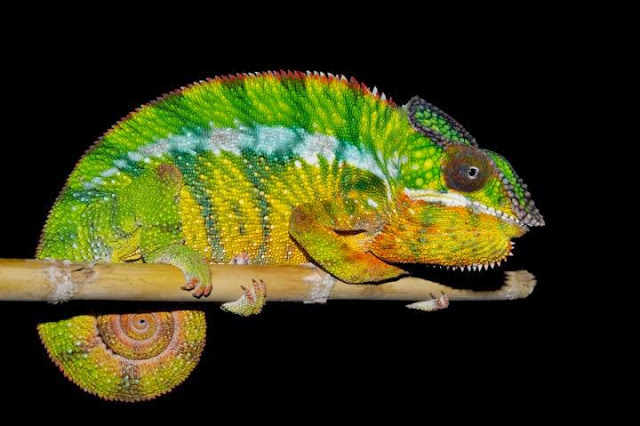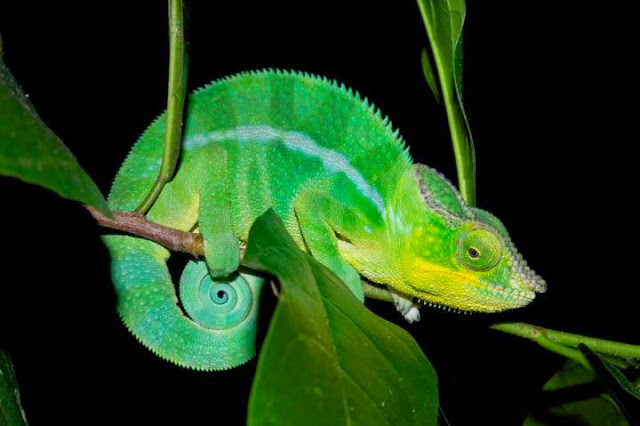| Online: | |
| Visits: | |
| Stories: |

| Story Views | |
| Now: | |
| Last Hour: | |
| Last 24 Hours: | |
| Total: | |
11 New Species Discovered in Madagascar
Credit: © Michel Milinkovitch
In collaboration with professor Achille Raselimanana of the University of Antananarivo, researchers from the Department of Genetics and Evolution in the UNIGE Faculty of Sciences, led by Michel Milinkovitch, sought to find the genetic keys behind panther chameleon’s incredible colour palette. Their analyses, performed on site in Madagascar, reveal the presence of 11 rather than a single species.
A Talkative Drop of Blood
It took two expeditions led from East to West for the scientists to collect a drop of blood from each of 324 individuals and document them through colour photographs. The DNA (mitochondrial and nuclear) of each of the specimens were sequenced and analysed in the laboratory according to the hypothesis that a chameleon’s dominant colour might be related to the geographic zone where it is found. Most importantly, the genetic material indicated strong genetic structure among geographically-restricted lineages, revealing very low interbreeding among populations.
The mathematical analyses of the 324 colour photographs demonstrated that subtle colour patterns could efficiently predict assignment of chameleon individuals to their corresponding genetic lineage, confirming that many of the geographical populations might need to be considered separated species. The scientists then simplified their analyses of the colour diversity into a classification key, which allows to link most chameleons to their corresponding species using only the naked eye. This case of hidden speciation confirms a major characteristic of Madagascar: it is amongst the most diverse places for life on Earth; a biodiversity hotspot.
Madagascar, Unique but Precarious Conservatory
Each of the new chameleon species requires individual management, given that they each constitute a different part of the biodiversity of the whole. The visual classification key devised by the researchers could assist local biologists and trade managers to avoid local population over-harvesting. The task of biodiversity management is daunting because of the widespread destruction of the forest habitat for agricultural practices as well as for firewood and charcoal production by populations with very low living standards. These human activities threaten the survival of 400 species of reptile, 300 species of amphibians, 300 species of birds, 15,000 species of plants and countless species of invertebrates. In addition, approximately 80 to 90% of all living species found in Madagascar are endemic, meaning they exist nowhere else on earth.
Given the charismatic nature of chameleons, Milinkovitch hopes that, beside a better understanding of the genetic basis of colour variation in chameleons, his collaborative study with his Malagasy colleagues will help his colleague, Professor Raselimanana, to continue his difficult enterprise: raising awareness for the staggering but fragile biodiversity hosted by Madagascar.
Source: http://www.ineffableisland.com/2015/05/11-new-species-discovered-in-madagascar.html





